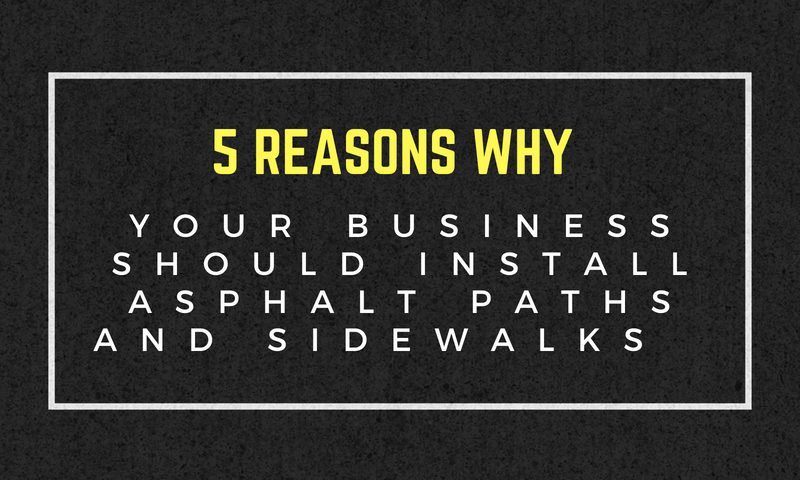
3 Winter Repairs You Should Be Making
Improving the lot around your business is important for economic growth. A number of things can go wrong in the winter with all the ice, snow, and rain, and there are repairs that businesses should be making to their lot. This will help prevent flooding and damage to the property, as well as increase customer safety.
Pothole Repair
Pothole repair is needed because it helps with improved curb appeal. If the parking lot is well maintained, it can convey to customers that you are a responsible business owner and value customer safety. Repairing potholes also saves money, since potholes that go unrepaired pose a risk for future damage that can be more expensive. Pothole repair is important for the safety of your customers and employees and can be a trip hazard for pedestrians. Businesses will be held liable for these injuries. Pothole repair can be difficult in the winter, but temporary repairs need to be made in order to ensure that drivers can get safely to the business. For temporary repairs, a cold mix asphalt should be used. This mix works especially well if the temperature is below the recommended level and it’s an emergency. All ice, moisture, and debris should be removed from the area before beginning the repair.
Catch Basin Repair
Catch basins and storm drains play an important role, especially in the winter with all the run off. Catch basins will catch and prevent contaminants from entering the drainage system. Without them, debris could enter the system and clog it, which will lead to some serious flooding and a negative effect on the property. If water pools in the lot, then the pooling on the asphalt can lead to the deterioration of the pavement. When water enters the joints it can cause the mortar to pop out and repairs are needed. Sometimes even cracks appear near the perimeter to allow more water to get in. Depending on the damages, repairs can extend from patching up asphalt around the perimeter to a complete structure repair.
Cracksealing
Winter is the perfect time for cracksealing because pavement expands and contracts with seasonal temperature changes. This means that joints and cracks are expanding when the pavement moves. Cracksealing is preventative winter road maintenance that is meant to extend the life of the pavement. It’s important to seal up cracks because cracks can allow for water and other materials, such as dirt, debris, and sand, to get into the pavement structure. These cracks will then accelerate the weakening and deterioration of the payment. With the proper seal cracking, and when properly executed, it can help extend the life of the payment from six months to four years. Before beginning any cracksealing, the area should be clear of any moisture, debris, vegetation, or dirt, in order for it to be the most effective. If using heat, be careful not the scorch the pavement and note that the sealant needs to be placed in the pavement before the crack cools to allow for it to adhere best. The entire crack should be filled and then leveled to make sure that the payment remains smooth. It’s important that any repair material or sealant is only applied only within the manufacturer’s recommended application temperature, otherwise it won’t work. More sealant isn’t always better. Too much can lead to problems when paving over. Cracksealing is important because it can buy time and help save money by delaying the expense of other major reconstructive work.
Improving the lot around your business is important for economic growth. A number of things can go wrong in the winter with all the ice, snow, and rain, and there are repairs that businesses should be making to their lot. This will help prevent flooding and damage to the property, as well as increase customer safety.
Pothole Repair
Pothole repair is needed because it helps with improved curb appeal. If the parking lot is well maintained, it can convey to customers that you are a responsible business owner and value customer safety. Repairing potholes also saves money, since potholes that go unrepaired pose a risk for future damage that can be more expensive. Pothole repair is important for the safety of your customers and employees and can be a trip hazard for pedestrians. Businesses will be held liable for these injuries. Pothole repair can be difficult in the winter, but temporary repairs need to be made in order to ensure that drivers can get safely to the business. For temporary repairs, a cold mix asphalt should be used. This mix works especially well if the temperature is below the recommended level and it’s an emergency. All ice, moisture, and debris should be removed from the area before beginning the repair.
Catch Basin Repair
Catch basins and storm drains play an important role, especially in the winter with all the run off. Catch basins will catch and prevent contaminants from entering the drainage system. Without them, debris could enter the system and clog it, which will lead to some serious flooding and a negative effect on the property. If water pools in the lot, then the pooling on the asphalt can lead to the deterioration of the pavement. When water enters the joints it can cause the mortar to pop out and repairs are needed. Sometimes even cracks appear near the perimeter to allow more water to get in. Depending on the damages, repairs can extend from patching up asphalt around the perimeter to a complete structure repair.
Cracksealing
Winter is the perfect time for cracksealing because pavement expands and contracts with seasonal temperature changes. This means that joints and cracks are expanding when the pavement moves. Cracksealing is preventative winter road maintenance that is meant to extend the life of the pavement. It’s important to seal up cracks because cracks can allow for water and other materials, such as dirt, debris, and sand, to get into the pavement structure. These cracks will then accelerate the weakening and deterioration of the payment. With the proper seal cracking, and when properly executed, it can help extend the life of the payment from six months to four years. Before beginning any cracksealing, the area should be clear of any moisture, debris, vegetation, or dirt, in order for it to be the most effective. If using heat, be careful not the scorch the pavement and note that the sealant needs to be placed in the pavement before the crack cools to allow for it to adhere best. The entire crack should be filled and then leveled to make sure that the payment remains smooth. It’s important that any repair material or sealant is only applied only within the manufacturer’s recommended application temperature, otherwise it won’t work. More sealant isn’t always better. Too much can lead to problems when paving over. Cracksealing is important because it can buy time and help save money by delaying the expense of other major reconstructive work.




